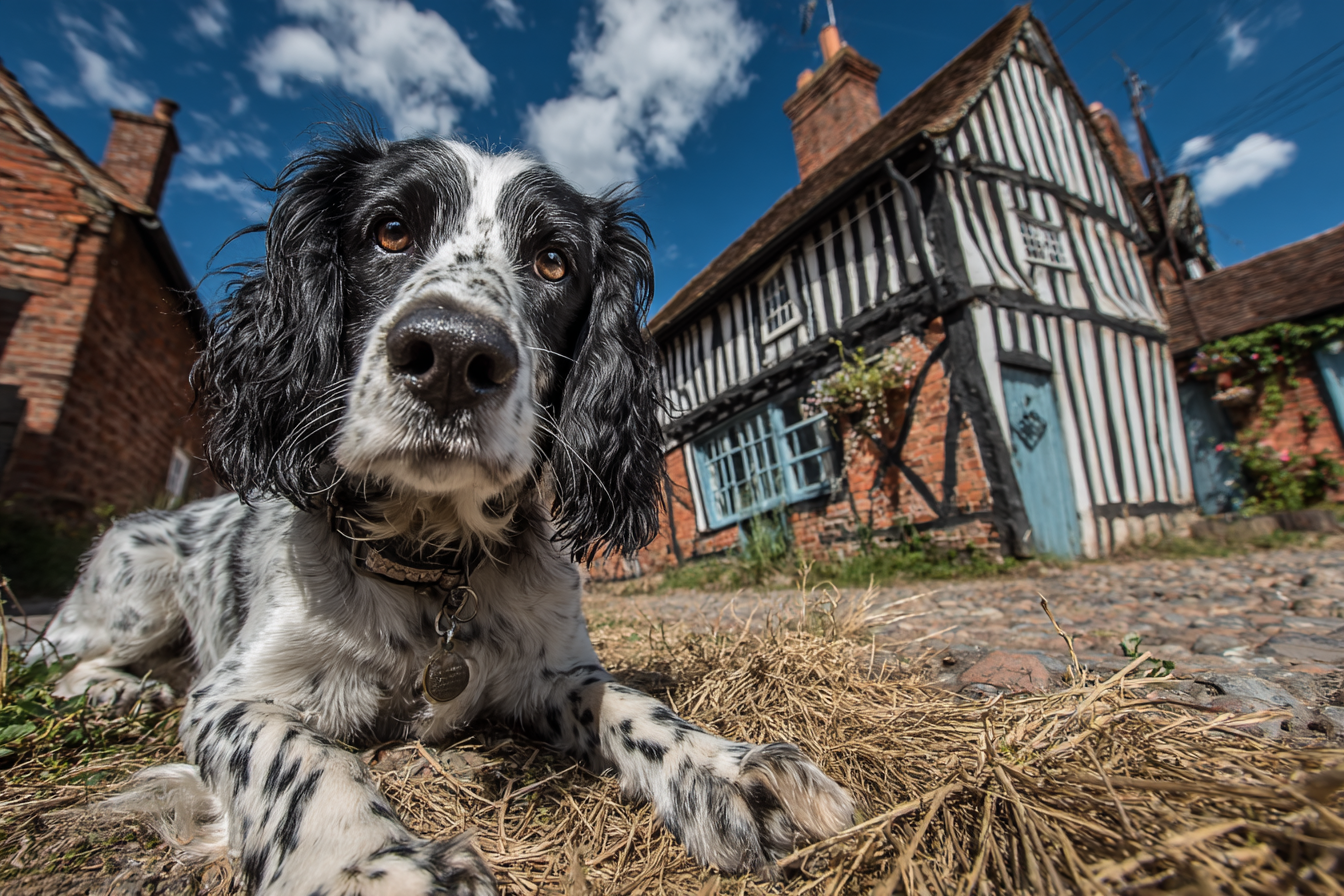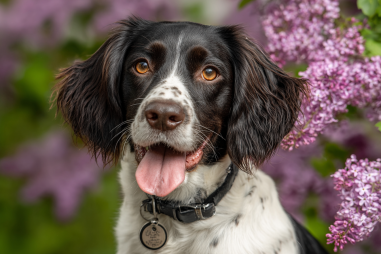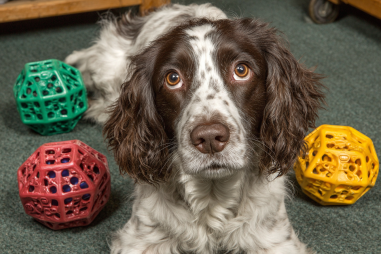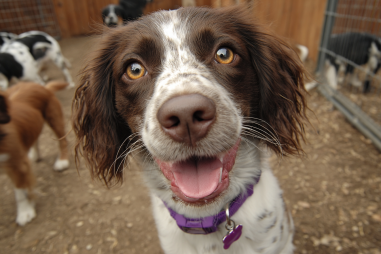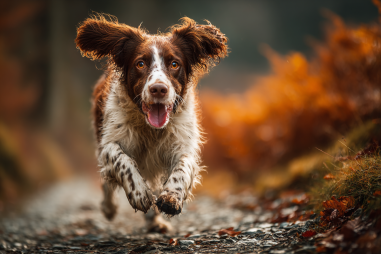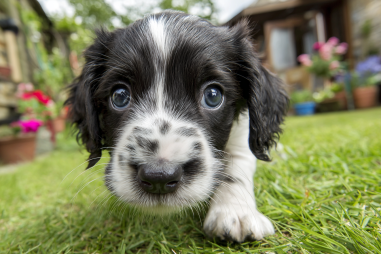The English Springer Spaniel is a breed that captures the hearts of dog lovers worldwide with its lively personality and keen hunting instincts. Known for its friendly demeanor and remarkable versatility, this breed has a deep-rooted history intertwined with human companionship and work. Let’s take a fascinating journey back in time to uncover the origins, evolution, and lasting legacy of the English Springer Spaniel, highlighting why it remains one of the most cherished breeds today.
Origins and Ancestral Breeds
The story of the English Springer Spaniel dates back several centuries, with its roots firmly planted in the British Isles. The term “spaniel” itself is believed to have derived from the Old French word “espaigneul,” which points to the breed’s beginnings linked to Spain. Spaniels were originally bred as flushing dogs, designed to “spring” game birds into the open for hunters. The English Springer Spaniel evolved from a group of spaniels used in England during the 18th and 19th centuries for working in the field and wetland environments.
Its ancestors are thought to include various regional working spaniels adept at flushing out birds without damaging them, an essential trait for hunters. These spaniels were medium-sized dogs with a strong build, excellent sense of smell, and energetic disposition. The English Springer Spaniel’s lineage is closely connected with other spaniel breeds, such as the Welsh Springer Spaniel and the English Cocker Spaniel, highlighting a shared heritage but distinct roles within hunting traditions.
Role in Hunting and Working Traditions
Historically, the English Springer Spaniel was prized as a versatile hunting companion, particularly known for its ability to flush game out from dense cover. The word “springer” actually comes from the dog’s instinct to spring or flush out birds, sending them airborne for the hunter’s shot. Their work often took place in marshes, woodlands, and open fields, where their agility, stamina, and keen senses were indispensable.
Unlike some other spaniels, the English Springer was bred to work over varied terrain and wet conditions, showcasing a water-resistant coat and webbed feet that allowed them to swim and retrieve game from water. Their intelligence and eagerness to please made training for complex hunting tasks easier, and their stamina ensured they could keep pace with hunters for long hours. Beyond flushing, they were also trained to retrieve birds gently, making them a comprehensive hunting partner.
Development of Breed Standards
As the breed gained popularity among hunters and dog enthusiasts, formal breed standards began to develop in the late 19th and early 20th centuries. The English Springer Spaniel Club was founded in England in 1885, reflecting the desire of fanciers to preserve the breed’s distinct characteristics and working abilities. Breed standards were established to outline the ideal size, coat color, temperament, and physical traits that exemplify the breed.
English Springer Spaniels are typically medium-sized dogs, standing between 19 to 20 inches tall at the shoulder and weighing 40 to 50 pounds. Their coat is medium-length with feathering on the legs, ears, and chest, often liver and white, black and white, or tricolor. The breed standard emphasizes a well-balanced, athletic body, expressive eyes, and long, pendulous ears.
Importantly, breed clubs have worked to maintain the hunting instincts and trainability of English Springer Spaniels, ensuring the breed remains not only a show ring favorite but also a reliable working dog. This balance between form and function has been a key part of the breed’s identity over the years.
Popularity Over Time Around the World
The English Springer Spaniel has enjoyed enduring popularity since its early days, embraced by hunters, families, and dog enthusiasts alike. Its affable nature and manageable size made it a popular choice beyond hunting circles, as a loyal companion and family pet. By the mid-20th century, the breed’s presence had expanded internationally, particularly to countries such as the United States, Canada, Australia, and parts of Europe.
In the United States, the American Kennel Club recognized the breed in 1910, and it soon became a favorite in both field trials and the show ring. Today, the English Springer Spaniel ranks consistently among the top breeds for families seeking a dog that combines energy, intelligence, and affection. Its popularity is also bolstered by its adaptability, thriving in both rural and urban environments as long as it receives ample exercise and mental stimulation.
Modern-Day Recognition and Use
Nowadays, the English Springer Spaniel is celebrated not only as a beloved family pet but also as a highly capable working dog in various roles. Its exceptional scenting abilities and trainability have made it a go-to breed for detection work, including narcotics and explosives detection, as well as search and rescue missions. They are often employed by police and military units worldwide due to their reliability and enthusiasm for work.
Beyond official work, they excel in dog sports such as agility, obedience, and field trials, continuing their heritage as energetic and focused athletes. Their gentle and friendly disposition also makes them wonderful therapy dogs, supporting people in hospitals, nursing homes, and schools.
In family settings, English Springer Spaniels are known for their affectionate nature and strong bond with their owners. They thrive on social interaction and require regular physical activity to maintain their happiness and health. Their versatility and eagerness to please make them rewarding companions for both first-time dog owners and experienced handlers.
Anecdotes and Famous English Springer Spaniels
Throughout history, several English Springer Spaniels have gained fame or made notable contributions that highlight the breed’s remarkable abilities. For example, during World War II, Springer Spaniels were employed by the British armed forces for their skills in detection and retrieving, saving countless lives with their keen noses.
In popular culture, English Springer Spaniels have appeared in movies and television, often cast in roles that emphasize their friendly and intelligent personality. One famous English Springer Spaniel, named “Bretagne,” is especially renowned for serving as a search and rescue dog at Ground Zero following the 9/11 attacks in New York City. Bretagne’s heroic work helping to locate survivors brought widespread attention to the breed’s courage and commitment.
Many owners cherish stories about their English Springer Spaniels displaying a clever or affectionate nature, underscoring why this breed has such a devoted following. Their natural curiosity, coupled with a strong desire to work and please, gives them a personality that many find endlessly endearing and inspiring.
The Enduring Legacy of a Beloved Breed
The English Springer Spaniel’s history is a testament to the enduring bond between humans and dogs, shaped by centuries of partnership in hunting, work, and companionship. From its early days as a skilled flushing dog in the British countryside to its modern role as a versatile working and family dog, this breed has held fast to its spirited and affectionate nature.
Today’s English Springer Spaniels benefit from dedicated breed clubs and enthusiasts who continue to promote responsible breeding, maintaining both the health and working capabilities of the breed. Their story is not just one of lineage or physical traits, but of a relationship built on trust, teamwork, and love. Whether in the field, at home, or performing heroic tasks, the English Springer Spaniel remains a shining example of loyalty and vitality, capturing hearts around the globe.

